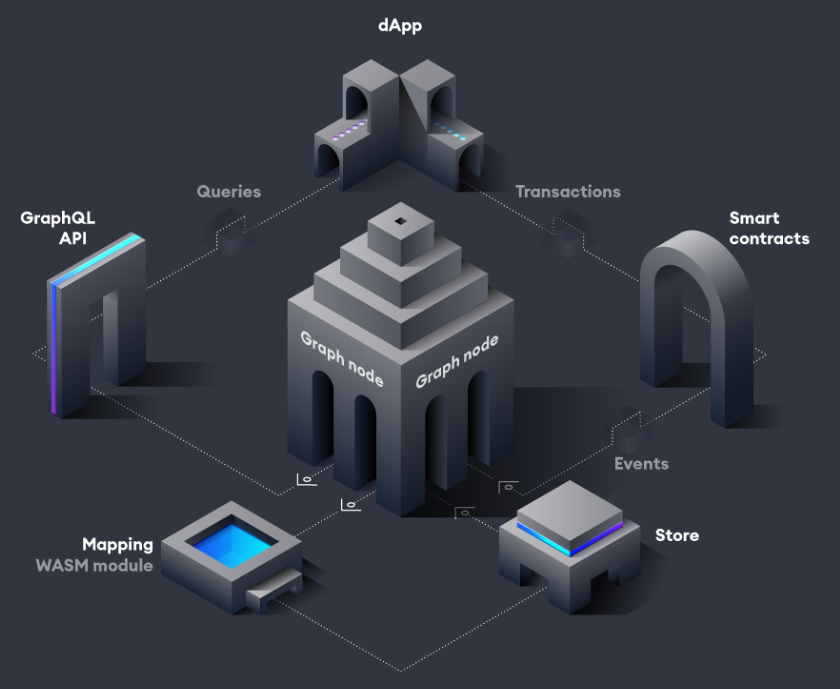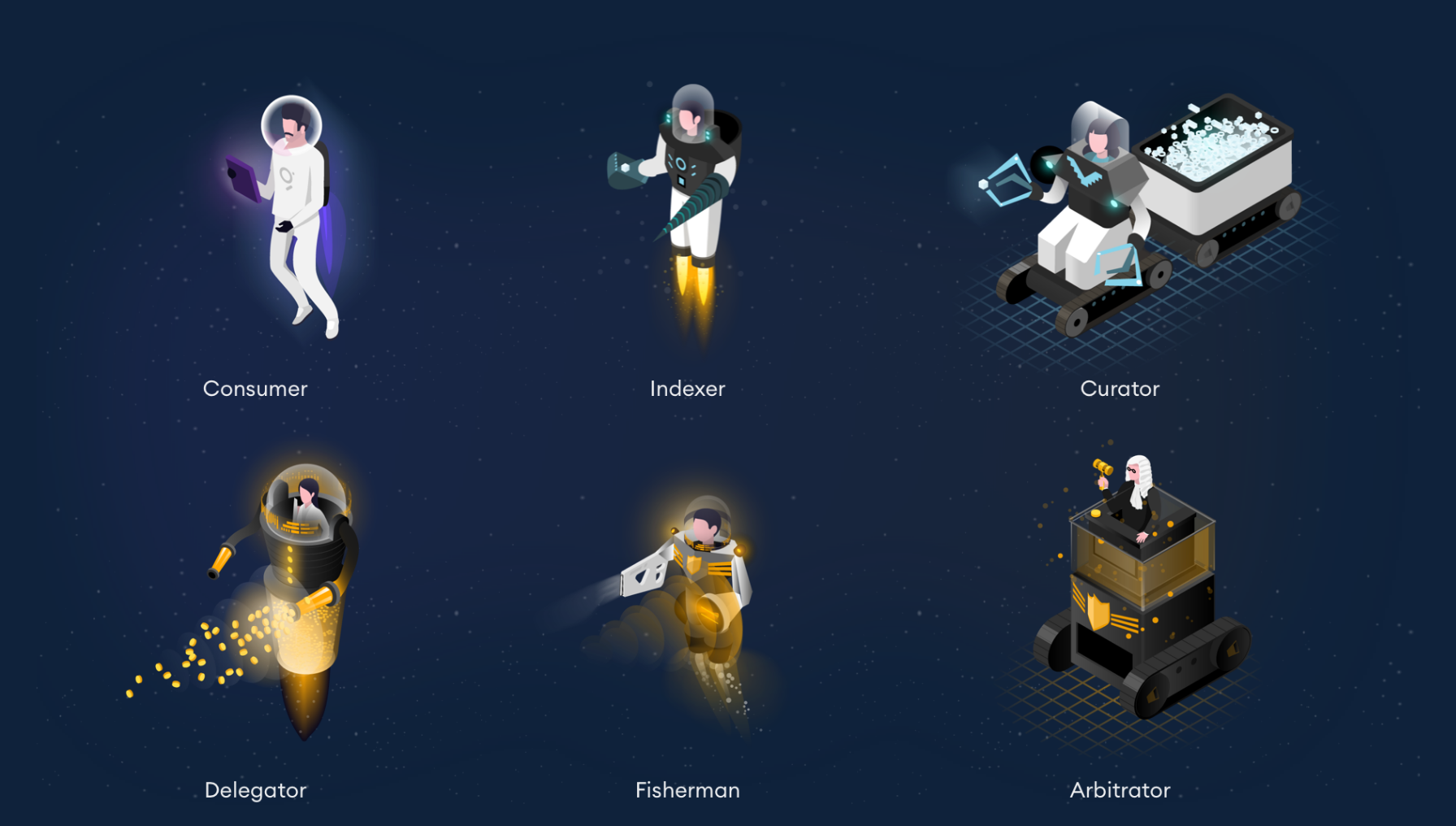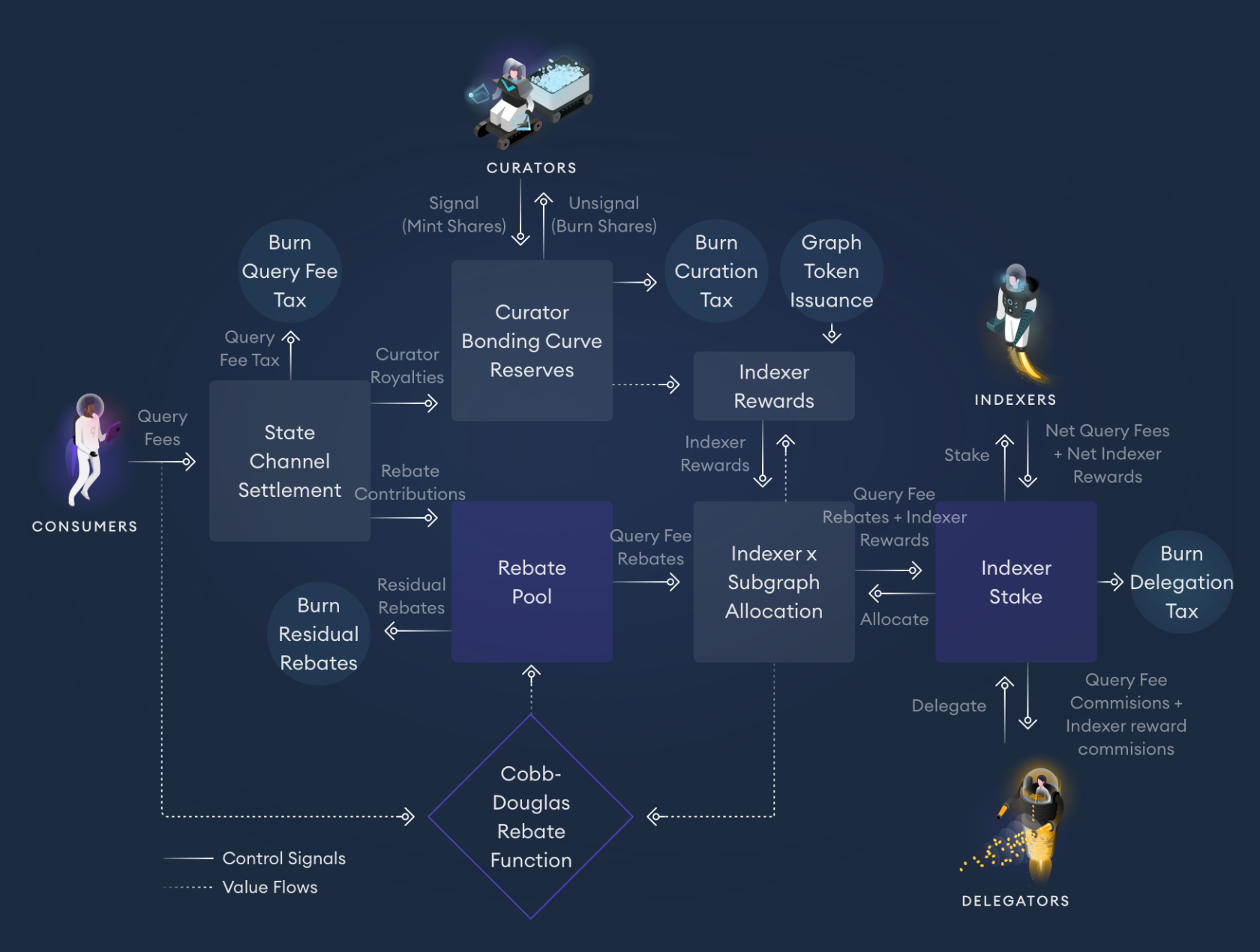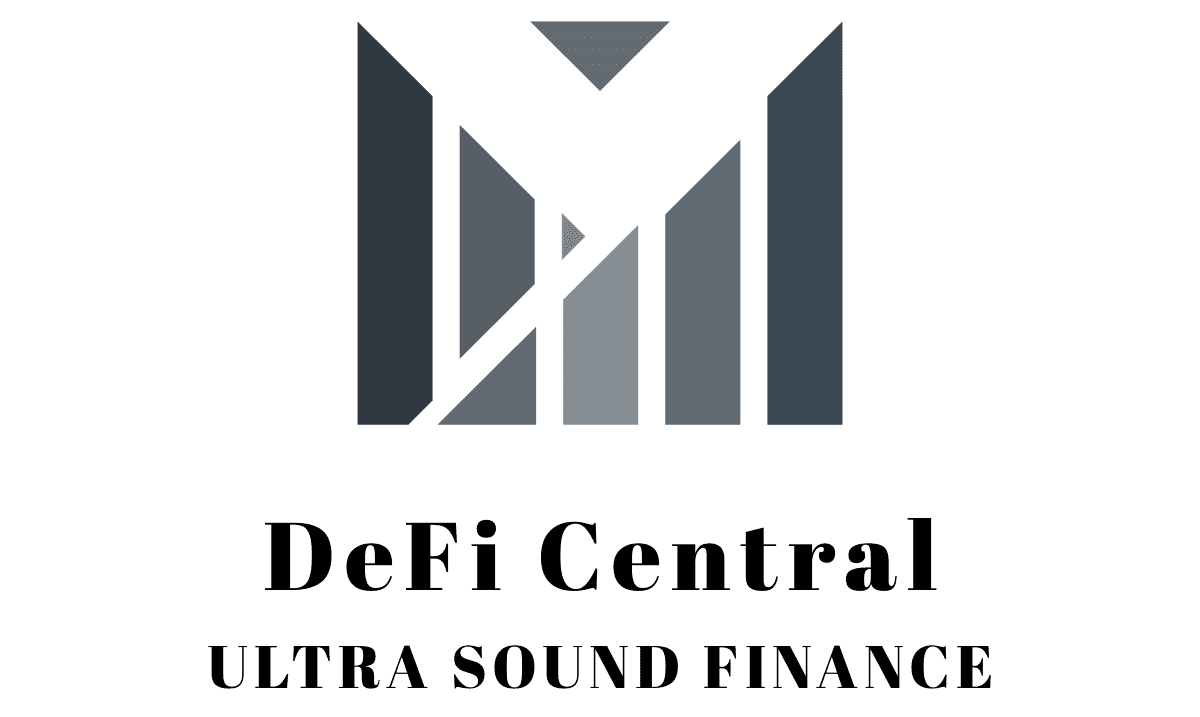
The Graph (GRT) is a protocol designed to facilitate information requests from smart contracts. Sometimes compared to the “Google of blockchains”, it could become one of the mainstays of the internet of blockchains as Web 3.0 unfolds. A magnifying glass on a major project.
- What is The Graph?
- The Graph ecosystem
- What are the roles of the GRT token?
- The Graph team and partners
- How to buy GRT tokens?
- Ratings and reviews on The Graph and its GRT token
What is The Graph?
The Graph is a decentralized indexing protocol that works in the form of open application programming interfaces (APIs), called “ sub-graphs ”. They allow users to query blockchains such as those of Ethereum (ETH), Polygon (MATIC) or Filecoin (FIL).
The mission of this major project is to enable the emergence of applications entirely powered by a public and distributed infrastructure .
This protocol is designed to facilitate information requests from smart contracts in the Web 3.0 ecosystem. It is to this extent that The Graph is sometimes compared to the “ Google of blockchains ”.
Indeed, instead of indexing web pages, the protocol indexes data from various blockchains , notably facilitating the creation of decentralized applications by developers.
“The properties of the blockchain […] complicate [queries] and make it not only time-consuming, but also conceptually difficult to extract correct query results from blockchain data. – Brandon Ramirez, co-founder of The Graph
The Graph is therefore a service for retrieving information from networks like Ethereum and the InterPlanetary File System (IPFS), both of which power decentralized finance (DeFi) and Web 3.0.
“The Graph solves this problem with a decentralized protocol that indexes and enables high-performance and efficient querying of blockchain data. -Brandon Ramirez
This project, founded by Yaniv Tal, Brandon Ramirez and Jannis Pohlmann was born from the objective of creating immutable APIs and providing easy access to Web 3.0 data, using the open source query language GraphQL, developed by Meta ( formerly Facebook) in 2012.
“Today there is a hosted service as well as a decentralized protocol offering the same capabilities. Both are backed by the open source implementation of Graph Node. -Brandon Ramirez

Logo of The Graph (GRT), by Cryptoast
Content with high added value and quick to consume
The Graph ecosystem
Let us now see how the protocol environment is made up and what roles the different network participants play.
To learn what data to index and how to index it, The Graph relies on descriptions of subgraphs, known as the ” subgraph manifesto . ” »
This description defines the relevant smart contracts for a subgraph, the events of those contracts to pay attention to, and how to match the data from the events to the data that The Graph will store in its database.
This diagram provides an overview of the data flow taking place once a subgraph manifest has been deployed:

Diagram of the path traveled by data on The Graph network – Source: The Graph
This flow follows these steps:
- A decentralized application adds data to Ethereum through a transaction on a smart contract.
- The smart contract emits one or more events while processing the transaction.
- A node in The Graph , continuously scanning Ethereum for new blocks and data to feed the subgraphs, finds Ethereum blockchain events for a given subgraph within those blocks.
- It activates the mapping handler provided by the subgraph creator (it is a WASM module that creates or updates data entities that the node stores in response to Ethereum blockchain events).
- The decentralized application queries the node for indexed data from the blockchain, using the node’s GraphQL endpoint.
- The decentralized application displays this data in an interface for end users, which they use to issue new transactions on Ethereum.
- The node in turn translates GraphQL queries into queries for its data store to retrieve that data, using the store’s indexing capabilities.
- The cycle then repeats in a loop.
To achieve its goals, The Graph ecosystem is made up of various entities ensuring the proper functioning of the protocol, each having a specific role to play.

Diagram of the different roles of the participants – Source: The Graph
Indexers
Indexers operate The Graph network nodes by locking a minimum of 100 units of the native GRT token which serves as fuel for the indexing and query processing services.
They select subgraphs to index based on the curation signal of the subgraph, where curators lock GRTs to indicate which subgraphs are high quality and should be prioritized.
Consumers (e.g. applications) can also set the parameters for which indexers serve queries for their subgraphs and set their preferences for pricing.
Rewarded with a portion of query fees and indexing rewards , they also benefit from a “ rebate pool ” which is shared with all network contributors in proportion to their contribution, according to the Cobbs-Douglas algorithmic function.
TSOs placed in escrow within the protocol are subject to a period of immobilisation and may be confiscated if the indexers are malicious, distribute incorrect data to applications, or index incorrectly.
Indexers may also be entrusted with TSOs by delegators , discussed below.
The Delegators
Delegators contribute to the network by delegating their GRT tokens to indexers via staking , in the same way that the student offers his vote to a class delegate who will act in his interest.
In doing so, indexers index (yes) and distribute data through open APIs. In return, delegators get a portion of query fees and indexing rewards.
This process requires very little technical knowledge and is probably the most accessible role within The Graph ecosystem.
Delegators cannot be penalized by arbitrators for misbehavior, but there is a filing fee to deter ill-intentioned decisions that could harm network integrity.
In fact, a delegator should use their best judgment to choose the most relevant and effective indexers for users.
Curators
Curators are essential to The Graph’s decentralized economy. Using their knowledge of the Web 3.0 ecosystem, they evaluate and flag the subgraphs they consider most likely to be indexed by the Graph network.
They use their GRT tokens to indicate which subgraphs are relevant to index . They are usually developers, but they can also be end users who support a service they depend on, or even investors wishing to support a given project.
The Graph network rewards curators who report relevant and qualitative subgraphs by paying them a share of the query fees that these subgraphs generate.
These entities are very useful for indexers , who can then process or index the data of these reported subgraphs with an assurance of the usefulness of the indexings for the community.

Diagram of value flows between participants – Source: The Graph
The Arbitrators
Acting as overseers and judges , arbiters watch the network for questionable transactions or flaws in indexing and delegation.
They ensure the proper flow of protocol within the network and can adjudicate disputes using an “arbitration charter” that outlines how disputes are to be resolved.
This role requires fundamental notions of governance and fairness since the arbitrator must be able to determine if a breach should be punished or if a fault stems from a software bug rather than from malicious behavior of the indexer. .
The Fishermen (Fishermans)
Their role is to ensure that a query brings back a relevant result to the end user. Constantly testing the network to verify its usefulness, they evaluate the contribution of indexers to the protocol by observing the results of queries.
They check whether the network’s response to queries is adequate , in other words in the world of indexing, relevant and able to respond to user queries.
Consumers
End users of the indexing service, they pay the indexers for their searches. These entities look like you and me when we make a request to a search engine like Google, DuckDuckGo or Firefox.
It can also be web services or any other software related to The Graph such as an oracles protocol that would need the most accurate data in order to determine the exchange rate of a trading peer for example .
What are the roles of the GRT token?
To support the functioning of the request market, the protocol uses a native utility token: The GRT.
GRT tokens have two main uses that are essential for the operation of the protocol:
- Indexer locking : Indexers deposit GRT tokens to be visible in the query market and provide economic security for the work provided.
- Curator signaling : Curators deposit GRT tokens in a curation market, where they are rewarded for correctly predicting which subgraphs will be of value to the network.
That said, consumers are encouraged to hold ETH or stablecoins of their choice in their wallet, although payments are settled in GRT to ensure a common unit of account across the protocol.
In addition to the uses described above, having a native utility token helps encourage certain behaviors that benefit the network as a whole, such as indexing new subgraphs, by issuing new tokens.
The Graph team
Jannis Pohlmann , Brandon Ramirez and Yaniv Tal founded The Graph in 2017 .
They were then joined by members of The Graph Council , within the eponymous foundation:
- Jim Cousins , freelance infrastructure architect;
- Gary Morris , Head of Infrastructure and Head of Staking;
- Justin Mose , CTO and creator of early subgraphs for Synthetix;
- Kayvon Tehranian , CEO, formerly Chief Product Officer at Dharma;
- Santiago Palladino , lead developer, working on security audits and OpenZeppelin developer tools;
- Yondon Fu , chief engineer, involved in the development of Livepeer’s governance contracts;
- Michael Anderson , co-founder of Framework Ventures;
- and Spencer Noon , chief investment officer and creator of the OurNetwork newsletter.

From right to left: Jannis Pohlmann, Brandon Ramirez and Yaniv Tal
The Graph partners
The project has many financial partners such as Multicoin Capital, Coinbase Ventures, ParaFi Capital, Digital Currency Group and Stakefish.
In addition, the protocol operates in collaboration with many blockchains such as those of Ethereum, Near, Livepeer, Polygon, Arbitrum or even Fantom.
How to buy GRT?
The GRT token is available for trading on most major platforms. GRT is notably listed on Binance, FTX, KuCoin, Huobi, and Kraken .
Due to the high liquidity of its markets, we recommend using the Binance exchange to buy and sell GRT.
To buy GRT on Binance:
- Register on Binance;
- You will receive an email and need to click on a link to verify your account;
- Deposit funds on the platform;
- Click on the Market menu and search for the GRT/BTC pair ;
- All you have to do is buy GRT for the amount of your choice;
- Congratulations 🎉 You are now in possession of your first GRTs!




